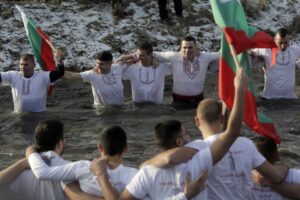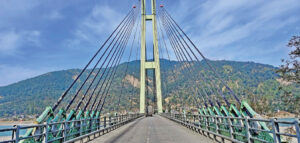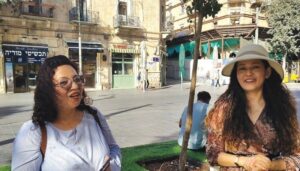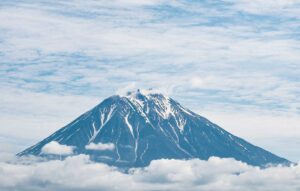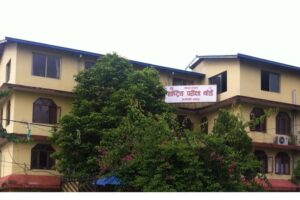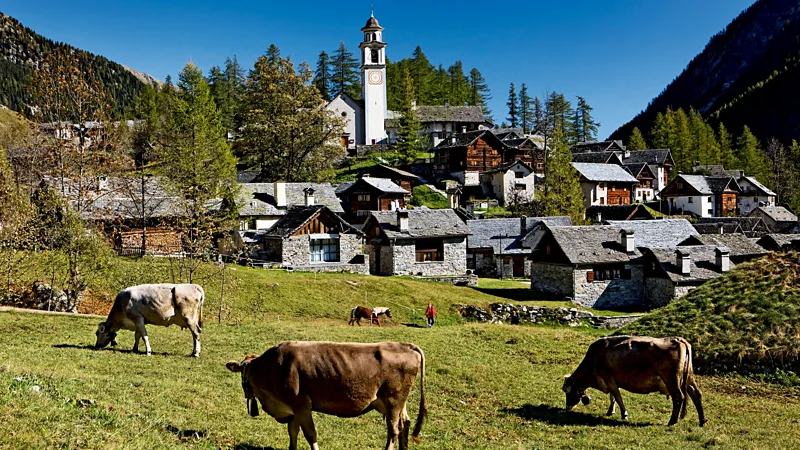
As I ceased to rest, the profound tolling of bovine chimes reverberated over Elevated knolls shinning with the sprouts of wildflowers. I took in a lungful of new mountain discuss, half-wondering how on soil the Walser individuals overseen to walk this same soak path with their animals and common belonging, and pushed advance along the old donkey track that driven up and out of the Binna Valley past the minor village of Fald.
I was in Switzerland to handle the to begin with stages of the recently introduced 210km Walserweg Gottardo long-distance climbing path, which formally opened in May 2024. Whereas the characteristic excellence of the path is sufficient to draw in climbers from over the world, the course has a more profound reason. It looks for to disentangle a few of the region’s most interesting human history: the little-known story of the Walser, who relocated through the Alps from Valais to Grisons for still obscure reasons amid the 12th to the 14th Centuries.
Predominantly shepherds, cattle breeders and subsistence agriculturists, the Walser have long been an under-appreciated portion of Swiss culture. They are inborn to the Canton of Valais in south-western Switzerland, but presently for the most part live at heights fair underneath the Tall Alps, so-named since their extraordinary tallness makes lasting human residence impossible.
The Tall Alps have customarily not been celebrated but dreaded. The Romans, known for their military might and amazing designing accomplishments, called the range terra maledicta or “reviled soil”. All things considered, the zone instantly underneath the Tall Alps is precisely where the Walser relocated, establishing little settlements encourage and encourage east on numerous events over numerous generations.
What makes the Walser’s antiquated choice to relocate eastbound so curiously is that the reasons behind their relocations, or Walserwanderungen, stay questionable, indeed to the Walser themselves. Both overpopulation of the Upper Valais and constrained relocation by primitive proprietors have been suggested.
“When I was in essential school [in the 1960s], they told us it was since the individuals had been hungry and went some place else where no one lived so they were able to remain there,” Andreas Weissen, a nearby manual creator told me. “Students of history presently say it was a program of settlement [of already uninhabited land].”
Today there are a few thousand Walser, occupying around 150 person towns for the most part arranged along the modern trail’s course and keeping up a unmistakable culture and dialect. They talk a lingo of German to a great extent incomprehensible to Standard German speakers and live in little communities of conventional vernacular wooden “Walserhaus” homes in the farther mountains. In some cases called “colonies”, these settlements reach all the way to Grisons, Switzerland’s easternmost canton, and as distant north as Lichtenstein.
Despite their geographic spread, the Walser are mindful their smallholder culture, created through need due to their noteworthy segregation, is at chance of vanishing. Numerous of their characteristics and conventions are intangible in nature. The Walser can’t be recognized by their citizenship, dress, physical appearance or devout confidence, meaning conventions are misplaced when Walser move from the Alps in look of work or wed into non-Walser families.
“It’s fair the quality to be who we are, to be diverse, to battle against the climate, the cold, and indeed be upbeat around it,” said Karin Tomamichel of the Walserhaus Gallery, when I inquired her what characterizes them as a people.
The modern path, made with the full back of Walser communities, is a way of keeping the culture lively by sharing their story with a more extensive number of individuals, indeed as Walser populaces in settlements decay.
The course begins in Valais and takes after their memorable relocation course, connecting a assortment of sights and areas that offer assistance uncover the Walser’s history and culture, counting towns, restaurants/bistros serving up generous Walser cooking and the Walserhaus Historical center in the town of Bosco Gurin
I’d chosen to handle the trail’s to begin with five stages, which saw me cover 67km of the path, from the Walser’s hereditary domestic of the town of Binn in Valais, where a few Walser still live in the midst of limit, car-free ways that lead between chalet-style blockbau homes, conspicuous by stacks of flat logs interconnected at the corners on a stone cellar.
Today, Valais is known for its French-speaking larger part, and whereas there are few physical updates of the Walser in the canton, the chronicled associations can be seen in other ways. For occurrence, “Walser” is a withdrawal of the word “Walliser”, meaning “occupant of Valais” in the Walser German lingo of Walsertitsch, indicating at more complex etymological and social beginnings in the canton.
From Binn, the path makes utilize of the most reduced pass through the mountains, the destroy 2,409m-high Albrunpass. To reach it, fair as the Walser did centuries back, I climbed consistently on old here-and-gone-again tracks and through field studded with covered up marmot burrows into larch woodland springy underneath from perpetual seasons of fallen needles.During the 20km, seven-hour climb, I experienced as it were a modest bunch of other walkers and no more than a sprinkling of confined homes. Snow proceeded to lie knee-deep in chasms fair next to the stamped course and the Through their continuous movements, the Walser were the to begin with to occupy the locale for all time, turning chasing ranges and summer field into year-round settlements shaped essential of smallholdings. Its apparently the region’s proceeded separation – the Val Formazza’s town of Crampiolo still can’t be come to by street and can be cut off for months over winter due to overwhelming snowfall – that has made a difference Walser culture to survive for so long.
Walking the Walserweg Gottardo
The path can be strolled between July and September, with snow blocking it at other times of year. The as it were existing path direct is in German, but the course is well signposted throughout.
The begin in Binn is effortlessly come to by open transport from over Switzerland by means of Brig
Physically troublesome, it’s prescribed walkers have a few past climbing encounter and a great level of fitness
Accommodation, regularly possessed by Walser, can be found at the conclusion of each stage
Despite being socially traditionalist at heart, their movements come about in flexibilities nearly progressive for the period. In trade for for all time settling the upper inclines, the Walser were able to get a few unused standard rights from landowners that most social orders needed. Called Walserrecht, they included full freedom from feudalism, the privilege to pass legacy on to beneficiaries and the foundation of “leaders” chosen by their communities to uphold law and arrange, something as a rule done by proprietors somewhere else in Switzerland at that time. Their movements too driven to developments such as the Rittbrätt, a harbinger of the snowboard.
Typical of the little Walser settlements I passed through was Riale, known in Walsertitsch as Chärbach. Here, I checked no more than a dozen buildings and a peak chapel married to the level ground of the Stream Toce’s contract floodplain and fixed in by crests still capped with snow. Each was a firmly built blockbau development with a
roof of overwhelming roughhewn tiles molded from neighborhood gneiss rock.
silence of the environment was as it were broken by the periodic few bars of birdsong until I come to the relative vitality of Italy’s Val Formazza, the area of the to begin with Walser settlements south of the Alps.
Riale had an almost-abandoned discuss so early in the climbing season, with fair a couple of pooch walkers and a single stopped car. Indeed so, its two little guesthouses publicized menus pressed with calorie-laden Walser specialities for energy-expending smallholders, such as Bettelmatt (a sort of difficult cow’s drain cheese), gnocchi Walser (potato gnocchi with bacon) and Prata Hapfla (potato hotcakes). It was difficult to discover businesses that weren’t keeping Walser culture alive.
It was similarly difficult to conceive of there being any course out of valley over the mountains, given that I was trimmed in on either side with inclines apparently as well soak to handle. However as early as the 13th Century, the Walser did fair that, crossing the Alps to the east of Val Formazza by means of the Hendar Furggu Pass to found Bosco Gurin.
Their movement to the as it were German-speaking settlement in Switzerland’s Italian-majority canton of Ticino, is resounded by arrange five of the Walserweg Gottardo.
To counter the abrupt slants, the arrange had me crisscrossing from Val Formazza through shady larch timberland. The trees opened out into Snow capped field and onto the shores of Lake Superiore, reflecting adjacent crests in its still waters and sending a frosty chill through the discuss. Bosco Gurin’s Walserhaus ethnographic gallery, housed in one of the most seasoned surviving structures in the Alps, dating to 1386, came into see a few hours of continuous strolling later.
More like this:
- A unused chance to climb Europe’s antiquated salt routeWaiting for me as I handled the final steps of the arrange along flagstones shaping the village’s pedestrian-only ways, cleaned with eras of wear, were Tomamichel and the Walserhaus’s keeper, Cristina Lessman Della Pietra, both of whom come from Walser families.
- An award-winning 1,400km climb into the wilds of Eastern Europe
- France’s centuries-old mountain cultivate stays
The trust is that the creation of the Walserweg Gottardo and the entry of climbers will offer assistance keep up the Walser’s culture for a long time to come by giving unused business openings that energize Walser individuals to remain. The nearness of a few youthful families, counting Tomamichel’s, gives trust for the future of Walser settlements like Bosco Gurin.
“I care around my culture, my roots,” Tomamichel told me. “I developed up here and it feels normal to keep up it. The Walserweg Gottardo will offer assistance us .
Related
Gold request goes down this Teej festival

